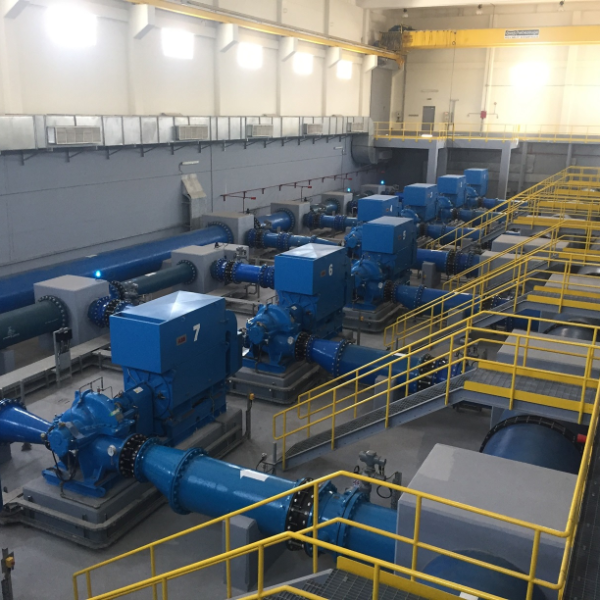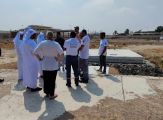Designs for a robust and affordable drinking water network Oman

Designs for a robust and affordable drinking water network Oman
An optimal design, for an extension of a drinking water network for example, pays for itself in lower CAPEX and lower costs over the lifespan of the network. Witteveen+Bos shared this insight with young engineers at Oman's national water company, Nama Water Services (NWS). NWS engineers were intensively guided in preparing their own designs.
In 2018, Witteveen+Bos, together with YAS CE from Oman and KWR from the Netherlands, acquired a three-year framework agreement for NWS under which several projects were carried out. The training programme designed to teach younger engineers the tricks of the design trade was part of this framework agreement.
This contract also includes projects aimed at expanding the national water distribution network. Oman's economy and population have grown substantially in recent decades. In turn, the demand for drinking water has also increased. However, only 60 per cent of the population has coverage. The remaining 40 per cent rely on water transport by road, at a higher cost price.
High-quality advice
With current and projected population growth, there is scope to expand the existing distribution network and open up other population centres. These extensions require the necessary preparations and activities in terms of master planning and concept and detailed designs.
In these areas, we guided and supported the company and its young(er) engineers from the Planning and Asset Management department. The company values knowledge transfer so that it can further professionalise its departments. In doing so, we provide high-quality advice in many areas such as hydraulic modelling, water demand calculations, network layout or cost estimates. But we also teach them how to develop soft skills, such as reporting, risk management and stakeholder management.
Master planning
When expanding a water distribution network, it is important to first estimate future water demand.
To this end, we conducted two studies for NWS using the Monte Carlo analysis based on 10 parameters (including population growth, water consumption per person, domestic/non-domestic consumption distribution and so on).
By 'endlessly' varying the expected future value of these parameters and combining them in a computer programme, NWS engineers have better insight into the expected water demand. This ultimately helps determine investments in water infrastructure (pipes, reservoirs, etc.).
Workshops
During the training programme, our experts reviewed designs by the NWS engineers and provided detailed feedback. Based on this, the NWS engineers adjusted their designs on the factors of cost, efficiency and robustness/safety of supply. In a number of cases, our advice led to design solutions that enabled NWS to save millions of euros. The young talent from NWS also got a look behind the scenes of a Dutch drinking water company to gain inspiration and share insights with their Dutch peers. A very educational experience!
Smarter designs
In the project, we also shared our design knowledge and experience more broadly with NWS. Based on our advice, the company now also opts for a partially branched rather than fully meshed design for the distribution network expansion. A partially branched design results in less use of materials (shorter length and smaller diameter pipes) and ensures better drinking water quality due to a lower residence time of drinking water in the pipe network. At the same time, together with the engineers, we took a critical look at smarter use of pumps so that more efficient use is made of the energy required to keep the drinking water network pressurised. We were able to realise savings in this area, as well.
More information?

.jpg)


